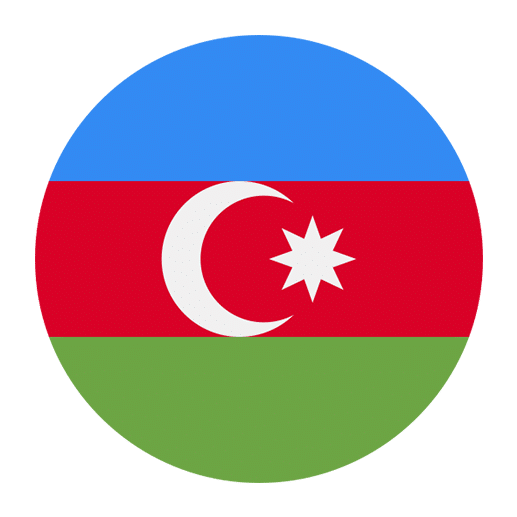Azerbaijani, the official language of Azerbaijan, is a Turkic language with a rich history and unique characteristics. For language learners, understanding Azerbaijani can be a rewarding experience, as it opens the door to a fascinating culture and history. One of the fundamental aspects of learning Azerbaijani is mastering its nouns. In this comprehensive guide, we will delve into Azerbaijani nouns, exploring their definitions and classifications to help you gain a deeper understanding of the language.
Definition of Azerbaijani Nouns
Nouns are an essential part of any language, and Azerbaijani is no exception. In Azerbaijani, a noun is a word that names a person, place, thing, idea, or concept. Nouns in Azerbaijani, like in English, can be subjects, objects, and complements in sentences. They can also be modified by adjectives, possessive pronouns, and other nouns.
In Azerbaijani, nouns are referred to as “isim” (plural: “isimlər”). They follow specific rules and patterns that can be quite different from those in English. Understanding these patterns is crucial for effective communication and comprehension.
Basic Characteristics of Azerbaijani Nouns
1. **Gender**: Unlike some languages, Azerbaijani nouns do not have grammatical gender. This simplifies learning, as there is no need to memorize gender-specific articles or adjective agreements.
2. **Number**: Azerbaijani nouns can be singular or plural. Pluralization is typically achieved by adding the suffix “-lər” or “-lar” to the singular form, depending on vowel harmony.
3. **Case**: Azerbaijani nouns change form based on their grammatical function in a sentence. These changes are marked by suffixes, and there are six primary cases: nominative, accusative, dative, genitive, locative, and ablative.
4. **Definiteness**: Azerbaijani does not have definite or indefinite articles like “the” or “a” in English. Instead, definiteness is often conveyed through context or word order.
Classification of Azerbaijani Nouns
Azerbaijani nouns can be classified in various ways, including by their origin, meaning, and grammatical function. Here, we will explore some common classifications to help you better understand Azerbaijani nouns.
1. By Origin
Azerbaijani nouns can be categorized based on their origin:
Native Azerbaijani Nouns: These are words that have originated within the Azerbaijani language and have Turkic roots. For example:
– “ev” (house)
– “su” (water)
– “ana” (mother)
Loanwords: Azerbaijani has borrowed many words from other languages, especially Persian, Arabic, Russian, and English. These loanwords have been adapted to fit Azerbaijani phonetics and grammar. For example:
– “kitab” (book) – from Arabic
– “telefon” (telephone) – from English
– “pəncərə” (window) – from Persian
2. By Meaning
Nouns can also be classified based on their meaning and the concepts they represent:
Concrete Nouns: These nouns represent physical objects that can be perceived by the senses. For example:
– “masa” (table)
– “ağac” (tree)
– “qapı” (door)
Abstract Nouns: These nouns represent ideas, concepts, or qualities that cannot be perceived by the senses. For example:
– “sevgi” (love)
– “xoşbəxtlik” (happiness)
– “bilgi” (knowledge)
Proper Nouns: These nouns refer to specific names of people, places, or organizations and are always capitalized. For example:
– “Azərbaycan” (Azerbaijan)
– “Bakı” (Baku)
– “Leyla” (a common Azerbaijani name)
Common Nouns: These nouns refer to general categories or classes of people, places, or things and are not capitalized unless they begin a sentence. For example:
– “şəhər” (city)
– “müəllim” (teacher)
– “heyvan” (animal)
3. By Grammatical Function
Azerbaijani nouns can also be classified based on their grammatical function within a sentence:
Subject Nouns: These nouns function as the subject of a sentence, indicating who or what performs the action. For example:
– “Uşaq məktəbə gedir.” (The child goes to school.)
Object Nouns: These nouns function as the object of a sentence, indicating who or what receives the action. For example:
– “Müəllim kitabı oxuyur.” (The teacher reads the book.)
Possessive Nouns: These nouns indicate possession or ownership. In Azerbaijani, possessive nouns are marked by suffixes. For example:
– “Ana-nın kitabı” (Mother’s book)
Vocative Nouns: These nouns are used to address someone directly. In Azerbaijani, the vocative case is marked by specific suffixes. For example:
– “Dostum, gəl buraya!” (My friend, come here!)
Pluralization of Azerbaijani Nouns
Pluralizing nouns in Azerbaijani is relatively straightforward. The choice of suffix depends on vowel harmony, a key feature of the language. Vowel harmony ensures that vowels within a word harmonize to be either front or back vowels.
Front Vowels: If the noun contains front vowels (e, i, ö, ü), the plural suffix “-lər” is used. For example:
– “ev” (house) becomes “evlər” (houses)
– “kitab” (book) becomes “kitablar” (books)
Back Vowels: If the noun contains back vowels (a, ı, o, u), the plural suffix “-lar” is used. For example:
– “ağac” (tree) becomes “ağaclar” (trees)
– “uşaq” (child) becomes “uşaqlar” (children)
Note that vowel harmony is an essential aspect of Azerbaijani grammar, and it applies to various suffixes beyond just pluralization.
Cases in Azerbaijani Nouns
Azerbaijani nouns change form based on their grammatical function in a sentence. These changes are marked by specific suffixes, and there are six primary cases in Azerbaijani:
Nominative Case
The nominative case is the base form of the noun, used when the noun is the subject of the sentence. For example:
– “Uşaq məktəbə gedir.” (The child goes to school.)
Accusative Case
The accusative case indicates the direct object of a verb. It is marked by the suffix “-ı” or “-i” for back and front vowels, respectively. For example:
– “Mən kitabı oxuyuram.” (I am reading the book.)
Dative Case
The dative case indicates the indirect object of a verb, often showing direction or purpose. It is marked by the suffix “-a” or “-ə” for back and front vowels, respectively. For example:
– “Mən məktəbə gedirəm.” (I am going to school.)
Genitive Case
The genitive case indicates possession or relationship. It is marked by the suffix “-ın” or “-in” for back and front vowels, respectively. For example:
– “Ana-nın kitabı” (Mother’s book)
Locative Case
The locative case indicates location or position. It is marked by the suffix “-da” or “-də” for back and front vowels, respectively. For example:
– “Mən evdəyəm.” (I am at home.)
Ablative Case
The ablative case indicates movement away from a location. It is marked by the suffix “-dan” or “-dən” for back and front vowels, respectively. For example:
– “Mən məktəbdən gəlirəm.” (I am coming from school.)
Possessive Constructions
In Azerbaijani, possessive constructions involve using suffixes to indicate ownership or relationship. Possessive suffixes are added to both the possessor and the possessed noun.
First Person Singular:
– “mənim kitabım” (my book)
Second Person Singular:
– “sənin kitabın” (your book)
Third Person Singular:
– “onun kitabı” (his/her book)
First Person Plural:
– “bizim kitabımız” (our book)
Second Person Plural:
– “sizin kitabınız” (your book)
Third Person Plural:
– “onların kitabı” (their book)
Definiteness and Indefiniteness
Azerbaijani does not have specific articles for definiteness or indefiniteness like “the” or “a” in English. Instead, definiteness is often conveyed through context, word order, or possessive constructions.
For example:
– “Kitab masadadır.” (The book is on the table.)
– “Bir kitab aldım.” (I bought a book.)
In the first sentence, “kitab” (book) is understood to be definite because it is specified as being on the table. In the second sentence, “bir” (a) indicates that the book is indefinite.
Common Noun Suffixes
Azerbaijani uses various suffixes to modify nouns. Here are some common noun suffixes and their functions:
Diminutive Suffix: The diminutive suffix “-cik” or “-cək” is used to indicate smallness or endearment. For example:
– “uşaq” (child) becomes “uşaqcik” (little child)
Augmentative Suffix: The augmentative suffix “-daş” or “-daş” is used to indicate largeness or intensity. For example:
– “dağ” (mountain) becomes “dağdaş” (large mountain)
Agent Suffix: The agent suffix “-çı” or “-çi” is used to indicate someone who performs a specific action. For example:
– “oxu” (read) becomes “oxuçu” (reader)
Instrumental Suffix: The instrumental suffix “-la” or “-lə” is used to indicate the means or instrument by which an action is performed. For example:
– “qələm” (pen) becomes “qələmlə” (with a pen)
Conclusion
Mastering Azerbaijani nouns is a crucial step in becoming proficient in the language. Understanding their definitions, classifications, and grammatical functions will significantly enhance your ability to communicate effectively in Azerbaijani. By paying attention to the nuances of noun usage, such as pluralization, case endings, and possessive constructions, you will gain a deeper appreciation for the language’s structure and beauty.
As you continue your journey in learning Azerbaijani, remember that practice and immersion are key. Engage with native speakers, read Azerbaijani literature, and immerse yourself in the culture to reinforce your understanding of nouns and other language elements. With dedication and perseverance, you will find yourself making great strides in mastering Azerbaijani.

